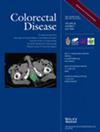Morbid obesity among Crohn's disease patients is on the rise and is associated with a higher rate of surgical complications after ileocolic resection
Abstract
Aim
Crohn's disease (CD) is regarded as a wasting disease, yet there is a growing population of CD patients with a body mass index (BMI) of 35 and above. The rate of postoperative complications is relatively high in CD patients but might be even higher in CD with morbid obesity (MO).
Methods
This was a retrospective study using a prospectively maintained database of all patients undergoing Ileocolic resection for CD between 2014 and 2021 in two referral centres, comparing postoperative complication rates according to BMI.
Results
Three hundred and forty-six patients were identified. Sixty patients (17%) had a BMI over 30 kg/m2, and 28 (8.1%) had a BMI of over 35 kg/m2 (>35 group). The BMI >35 group had more women (78.6% vs. 52%, P < 0.1), a higher rate of patients not receiving an anastomosis (7.1% vs. 2.5%, P = 0.02), a higher rate of any postoperative surgical complication (32.1% vs. 25.2%, P = 0.4), with a higher rate of Clavien–Dindo ≥3 (14.3% vs. 7.2%, P = 0.25), a higher rate of stoma creation on reoperation for complications (7.2% vs. 1.7%, P = 0.04), a higher rate of 30-day readmission due to intra-abdominal abscess (10.7% vs. 4.7%, P = 0.2), but a lower rate of postoperative medical complications (3.6% vs. 15.7%, P < 0.01).
Conclusions
The rate of MO among CD patients requiring ileocolonic resection is on the rise. MO in this setting is associated with statistically non-significant increases in all surgical complications, severe complications, readmission, and a higher chance for a bailout stoma creation upon reoperation. However, MO seems to be a protective factor for medical postoperative complications, which might suggest better nutritional status.

 求助内容:
求助内容: 应助结果提醒方式:
应助结果提醒方式:


